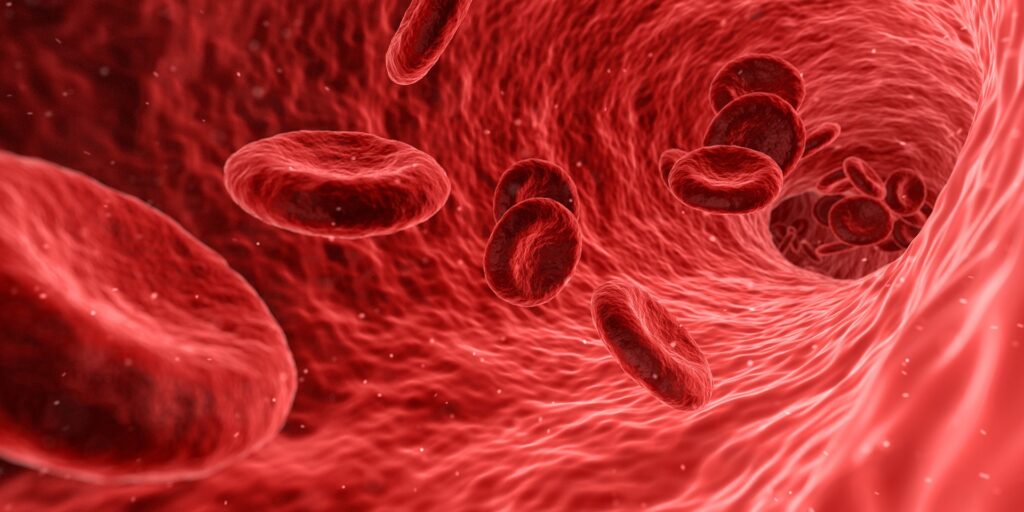
A new study challenges the view that high haemoglobin levels are always desirable for health.
A study based on two large human cohorts as well as experimental work supported the idea that lower haemoglobin levels may protect against both obesity and metabolic syndrome. The phenomenon may be related to the body’s adaptive response to low-oxygen conditions, which is exploited by endurance athletes in high-altitude training.
Haemoglobin levels vary from one individual to another, with normal levels in Finnish population ranging from 117 to 155 grams per litre in females and 134 to 167 grams per litre in males.
A recent study showed that individual differences in haemoglobin levels are strongly associated with metabolic health in adulthood. The haemoglobin levels were associated with body mass index, glucose metabolism, blood lipids and blood pressure. Subjects with lower haemoglobin levels were healthier in terms of metabolic measures. The study examined haemoglobin values within the normal range.
“We found a clear association between hemoglobin levels and key cardiovascular traits, and the associations became more pronounced as the subjects aged,” said principal investigators Professor Juha Auvinen, doctoral student Joona Tapio and postdoctoral researcher Ville Karhunen.
The effect of lower haemoglobin observed in the study is related to a mild oxygen deficiency in the body and the corresponding hypoxia inducible factors (HIF) response which is activated as a result. The research team of Professor Peppi Karppinen is internationally known for its studies on this phenomenon. The finding reinforces the understanding of the central role that the HIF response has in regulating the body’s energy metabolism.
“Haemoglobin levels are a good measure of the body’s ability to carry oxygen. A mild lack of oxygen activates the HIF response, which makes the body’s energy metabolism less economical and thus may protect against obesity and unfavourable metabolism,” explained study leader Prof Karppinen.
Prof Karppinen’s team has already shown in previous research that activation of the hypoxia response protects mice from obesity, metabolic syndrome, fatty liver and atherosclerosis. This is the first study to show the link between oxygen deficiency and a wide range of metabolic health markers in humans as well.
“Although this study uses multiple methods to establish links between lower body oxygen levels and metabolic health, it is very challenging to establish causality for the observed associations in human data. However, combining evidence from different components of the study, the results support that hypoxia response may also play an important role in peoples’ metabolic health,”explained co-leader of the study Professor Marjo-Riitta Järvelin.
“We also already know that in people living high above sea level, low oxygen levels in the habitat cause long-term activation of the HIF response. These people are slimmer, and they have better sugar tolerance and a lower risk of cardiovascular death,” said Prof Karppinen.
The study was based on a large cohort of people born in Northern Finland in 1966, which followed the health of 12 000 people since birth. The results were also replicated in The Cardiovascular Risk in Young Finns Study cohort material, which covers more than 1800 individuals.
“Although this study uses multiple methods to establish links between lower body oxygen levels and metabolic health, it is very challenging to establish causality for the observed associations in human data. However, combining evidence from different components of the study, the results support that hypoxia response may also play an important role in peoples’ metabolic health”, explained study co-leader Professor Marjo-Riitta Järvelin.
Professor Peppi Karppinen said, “We also already know that in people living high above sea level, low oxygen levels in the habitat cause long-term activation of the HIF response. These people are slimmer, and they have better sugar tolerance and a lower risk of cardiovascular death.”
A question for future research is how to reduce the body’s oxidation levels if needed. This would be to achieve a permanent low-level activation of the HIF response and thus obesity protection. According to Prof Karppinen, the HIF enzymes that prompt a hypoxic response could potentially be used as targets of obesity and metabolism drugs in humans. Currently they are being used in Asia to treat renal anaemia.
Source: University of Oulu
Journal information: Auvinen, J., et al. (2021) Systematic evaluation of the association between hemoglobin levels and metabolic profile implicates beneficial effects of hypoxia. Science Advances. doi.org/10.1126/sciadv.abi4822.

